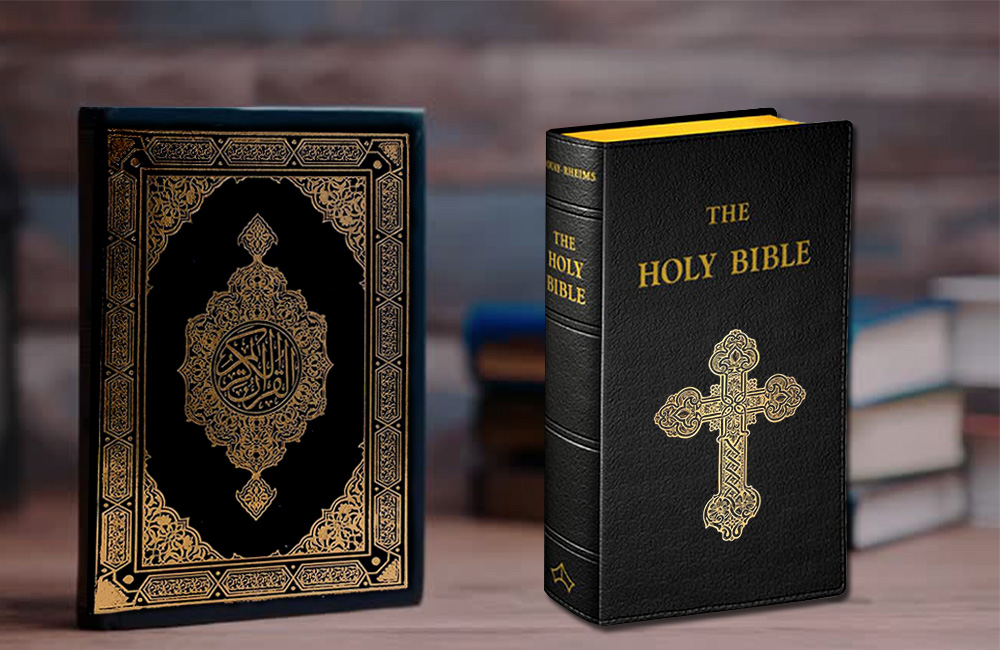When comparing the Bible and the Qur’an, one immediately notices a striking difference not only in content but in form. The very shape of the two texts, the way they are arranged, and the clarity with which they present their message stand in sharp contrast.
The Bible: A Unified and Ordered Narrative
The Bible is not one book but a collection of books, yet it exhibits an unmistakable order. The Tanach (Old Testament) follows a narrative arc from creation, through covenant, history, prophecy, and poetry. The New Testament continues this flow, beginning with the life of Christ and extending to the letters of the apostles and the final vision of Revelation. Each book of the Bible has its own beginning, middle, and end. Events follow chronological sequence, characters are introduced with context, and stories unfold in a way that allows the reader to see cause and effect. The text often explains itself: genealogies show connections, laws are set in historical circumstances, and prophecies are tied to real events and kings.
The result is clarity. Even a casual reader can follow the biblical story from Genesis to Revelation as a continuous narrative, with themes of creation, covenant, sin, and redemption woven consistently across centuries. Yet it must be noted that the Bible is not meant to serve as a general history of the world. Rather, it presents a sacred history: from the beginning of creation in Genesis to the consummation of all things in the Apocalypse, the text frames human events within God’s plan of salvation. It does not attempt to record every people or empire, but focuses on the chosen line and the unfolding of the divine covenant, offering a continuous and purposeful story rather than a mere chronicle.
The Qur’an: Fragmented and Repetitive Composition
The Qur’an, by contrast, is not organized as a narrative but as a collection of surahs (chapters) arranged roughly by length, longest to shortest. This structure does not follow chronology, geography, or storyline. As a result, the reader does not encounter the life of Muhammad or the stories of earlier prophets in sequence, but in fragments scattered across the text.
Stories from the Bible appear in the Qur’an but are broken into disconnected episodes, repeated in slightly different forms, and often lacking context. Noah’s flood, Moses’ mission, Joseph’s life, and other narratives appear not as continuous histories but as scattered reminders. Key details are omitted, names are sometimes missing, and the setting is assumed rather than explained.
The Qur’an repeatedly tells the reader that it is “clear” and “easy to understand,” yet its arrangement leaves the uninitiated reader puzzled. The absence of context means one must already know the biblical versions of the stories in order to make sense of them. In practice, the Qur’an depends on earlier scripture for clarity while presenting itself as superior.
Clarity versus Ambiguity
This difference in structure produces very different experiences for the reader. The Bible draws the reader into a grand narrative, where each book contributes to an unfolding story. The Qur’an, on the other hand, requires constant interpretation, commentary, and explanation to be understood. This is why Islamic tradition had to develop the Sunnah and Hadith, as well as centuries of tafsir (commentary), simply to provide coherence.
Conclusion
The contrast between the Bible and the Qur’an is not only a matter of theology but of text itself. The Bible is an ordered, self-explanatory work, presenting a continuous revelation of God’s dealings with humanity. The Qur’an is fragmented, repetitive, and dependent on outside explanation. Where the Bible gives clarity, the Qur’an leaves ambiguity; where the Bible narrates, the Qur’an alludes. This textual difference alone speaks volumes about the nature and origin of the two scriptures.
